Bonfires of Saint John
| The Catalan / Valencian cultural domain |
|---|
 Fireworks at the 2008 event |
|
People |
|
Geo-political divisions |
The Bonfires of Saint John (Spanish: Hogueras de San Juan, Catalan: Fogueres de Sant Joan, Galician: Noite de San Xoán, Asturian: Fogueres de San Xuán, Portuguese: Fogueiras de São João) is a traditional and popular festival celebrated around the world during Midsummer, which takes place on the evening of 23 June, St. John's Eve. It is customary in many cities and towns in Spain; the largest one takes place in Alicante, where it is the most important festival in the city. The biggest celebration in Portugal is held in Porto, where it is known as the Festa de São João do Porto.
The bonfires are particularly popular in many Catalan-speaking areas like Catalonia and the Valencian Community, and for this reason some Catalan nationalists regard 24 June as the Catalan nation day.
History
The festivals of Midsummer's Eve (St. John's Eve among Christians) have roots in ancient celebrations related to the summer solstice. Bonfires were lit to protect against evil spirits which were believed to roam freely when the sun was turning southward again. In later years, witches were also thought to be on their way to meetings with other powerful beings.
Traditions
Fire features in many of the celebrations, with people gathering together and creating large bonfires from any kind of wood, such as old furniture, and sharing food and drinks while teens and children jump over the fires. In some areas, bonfires are traditionally named tequeos, which means people of the dance. Parties are often organized at beaches, where bonfires are lit and a set of firework displays usually take place. On the Spanish Mediterranean coast, especially in Catalonia and Valencia, special foods such as coca de Sant Joan are also served on this occasion. In Alicante, since 1928, the bonfires of Saint John were developed into elaborate constructions inspired by the Falles, or Fallas, of Valencia.
Midsummer tradition is also especially strong in northern areas of Spain, such as Galicia, Asturias and Cantabria where one can easily identify the rituals that reveal the pagan beliefs widespread throughout Europe in Neolithic times. These beliefs pivot on three basic ideas: the importance of medicinal plants, especially in relation to health, youth and beauty; the protective character of fire to ward men off evil spirits and witches and, finally, the purifying, miraculous effects of water. What follows is a summary of Galician traditions surrounding St. John's festival in relation to these three elements.
- Medicinal plants: Traditionally, women collect several species of plants on St. John's eve. These vary from area to area, but mostly include fennel, different species of fern (e.g. dryopteris filix-mas), rue (herb of grace, ruta graveolens), rosemary, dog rose (rosa canina), lemon verbena, St John's wort (hypericum perforatum), mallows (malva sylvestris), laburnum, foxgloves (digitalis purpurea) and elder flowers. In some areas, these are arranged in a bunch and hung in doorways. In most others, they are dipped in a vessel with water and left outside exposed to the dew of night until the following morning (o dia de San Xoan -St. John's day), when people use the resulting flower water to wash their faces.
- Water: Tradition holds it that the medicinal plants mentioned above are most effective when dipped in water collected from seven different springs. Also, on some beaches, it was traditional for women who wanted to be fertile to bathe in the sea until they were washed by 9 waves.
- Fire: Bonfires are lit, usually around midnight both on beaches and inland, so much so that one usually cannot tell the smoke from the mist common in this Atlantic corner of Iberia at this time of the year, and it smells burnt everywhere. Occasionally, a dummy is placed at the top, representing a witch or the devil. Young and old gather around them and feast mostly on pilchards, potatoes boiled in their skins and maize bread. When it is relatively safe to jump over the bonfire, it is done three times (although it could also be nine or any odd number) for good luck at the cry of "meigas fora" (witches off!).It is also common to have Queimada (drink), a beverage resulting from setting alight Galician grappa mixed with sugar, coffee beans and pieces of fruit, which is prepared while chanting an incantation against evil spirits.
Celebration in Alicante
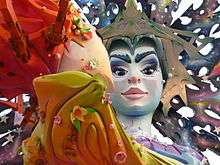
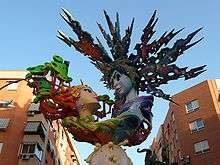
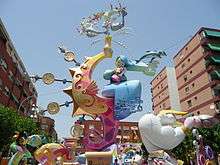

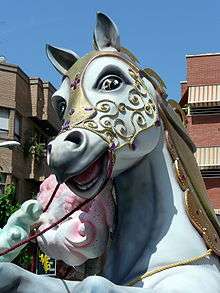
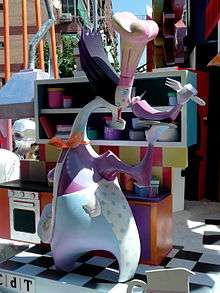
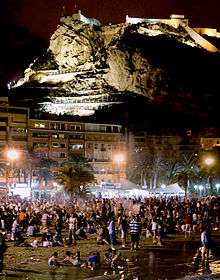
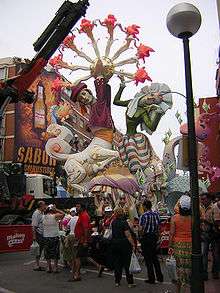
Origins
Before 1928, the bonfires of Saint John had been celebrated in Alicante as it had been elsewhere in Europe: by burning old pieces of furniture on the night of Saint John on 24 June. The Bonfires festival in Alicante originated in 1928. Jose María Py, the founder of the festival, felt that Alicante needs an important fiesta, and come up with an idea to combine bonfires with a Valencian tradition known as the "falles". The festival ultimately became the most important cultural event in Alicantinian society.
Events
- The Bonfires start with the 'Set Up' (la plantà) when monuments, street ninots and archways to the "barraques" are set up in the streets. A pie of tuna (coca amb tonyina) and early figs (bacores) are eaten at night.
19–24 June
- The despertà occur at 08:00 - Neighbours are awakened with a great deal of noise in all the districts of the city.
- The mascletà takes place at 14:00. It is a combination of fireworks and a very long string of firecrackers (bangers).
- At night, from 23:00 to 06:00 there are street parties in all the districts of the city. People dance and drink all night at the "racós" (sing. racó) and the "barraques" (sing. barraca).
21 June
- The Street Band Parade (Desfile de entrada de bandas) occurs at 19:00.
22 June
- At 11:30, the Prize Giving Parade (Desfile de entrega de premios) takes place
- At 19:00, the Flower Offering Parade to the Remedy's Virgin (Ofrenda de flores a la Virgen del Remedio) takes place.
In the three parades, people wear the traditional garments from Alicante, and, in the Flower Offering, women wear mantilla and they have a bunch of flowers.
23 June
- At 21:00, the International Folklore Parade (Desfile folklórico internacional) takes place.
24 June :
- At 00:00, the Palm (firework) (La Palmera), occurs. This is a magnificent cascade of fireworks, and it is followed by the Burning (La Cremà), which is the culmination of the festival.
Before the main events, in the beginning of June, there are the Ninot and Children's Ninot Exhibition (Exposición del Ninot y del Ninot infantil), the Paella Contest (Certamen de Paellas), the Tribute to Past Foguerers and Barraquers (La ofrenda a foguerers y barraquers fallecidos), the Opening Ceremony (El Pregón), the Ninot Parade (La Cabalgata del Ninot), and the Street Parade of Ninots competition (La plantà de los Ninots de career).
After 24 June, there is the Firework Display Competition (Concurso de Castillos de Fuegos Artificiales) and the String of Firecrackers Display (Concurso de tracas) in Postiguet Beach. There are also sports events and a Medieval Street Market.
The Bonfires commissions host a number of other events during the rest of the year. In autumn, there is a musical and dancing competition known as the Artistic Competition (Concurso artístico). In December, there is the Christmas Carol Competition (Concurso de villancicos). In May, there is the Beauty of the Fire Contest (Festival de elección de la Bellea del Foc), which is the most important event outside the festive period, followed by the Beauty of the Fire Proclamation (Proclamación de la Bellea del Foc). During the year, there are the Presentations of the Beauties in all the districts of Alicante.
Organization
Bonfires are organised into commissions which fundraise and host the other events throughout the year. A member of a commission is called a foguerer. A commission usually represents one area, a place or an avenue in the city, but there are many areas with numerous commissions. (For example, Carolinas has five commissions: Carolinas Altas, Carolinas Bajas, Foguerer-Carolinas, Doctor Bergez-Carolinas and Bola de Oro.) In Alicante there are more than 90 commissions (and so many others for children).
A barraca is a group of friends who don't take part in all the activities, and they raise money only to eat, drink and dance during the festival in a place in the street called the barraca. The member of a barraca is called barraquer.
The barracas and the racós are places in the street with tables, chairs, a bar, an orchestra and a dance floor. They are places for people to eat, talk, drink, dance and socializing during the festivities. The difference between the barraca and the racó is that the racó is for the entire district and admission is free, while entrance to the barraca is restricted. The racó is made by the foguerers and the "barraca" is made by the "barraquers".
The commissions organize and take part in several events during the year: an artistic competition, parades, beauty contests, etc. These activities are open to the general public and the participation of the district's residents is very important and, sometimes, they are the main group. In districts such as Ciudad de Asís, Florida-Portazgo, Los Ángeles and Carolinas Altas, the relationship between the commission and the district's residents is very strong.
A very important source of financing for the festival is a lottery administered by the commission, although there are other sources such as tombolas, raffles, or sales.
Beauties
Beauty is the most emblematic element in the Bonfires after the monument. The Beauty is a woman who is the queen of the festival . There are both Beauties and Infantile Beauties representing Bonfires and Infantile Bonfires respectively.
Since a Beauty is the representative of a particular commission, there are near 90 Beauties and so many Infantile Beauties in Alicante. A Beauty can have two or four Honour Ladies in her commission.
There are certain Honour Ladies for the whole city. The Beauty of the Fire (Bellea del Foc) is the queen of the festival in all the city and there are also six Ladies of the Fire (Damas del Foc).
Clothes
There are three types of traditional clothes:
Novia alicantina (Alicantinian Bride): the costume that Beauties and Honour Ladies wear. It is made up of:
- A band in the hair
- A white and round mantilla
- A small lemon blossom bunch
- Two hangings
- A cross with jewellery around the neck
- A black, velvet, waist with long sleeves
- A fan
- A black apron with jewellery
- A long skirt
- A petticoat (enaguas)
- White stockings
- Black heels
Labradora (farmer): the costume for the other women. It is made up of:
- A band in the hair with flowers
- Two hangings
- A cross with a black ribbon in the neck
- A white piece called "manteleta"
- A waist made in colours
- A white apron
- A long skirt, the same of the Beauties
- A petticoat (enaguas)
- White stockings
- Black heels
Zaragüelles: the costume for the men. It is made up of:
- A scarf in the head or in the neck
- A cotton, white, shirt
- A blanket with pockets
- A long sash at the same colour that the scarf
- Full white trousers called "zaragüelles"
- White stockings
- Shoes called "espardeñas"
Art: Monuments
Bonfires are an art show. In autumn, there is an artistic competition among the Bonfire Commissioners. In the Festival, there are Ninots (wooden figures) in the street. This is an old tradition that was revived in 2008. Every year there is an Official Festival Poster, a beautiful art demonstration. But the most important in this festival are the Monuments, who are called Bonfires (Hogueras or Fogueres). They are made of wood, cardboard, mud, paintings and, nowadays, of cork and polyurethane too. A Bonfire is not only an artistic creation, it is a critique of the societal, political and economic situation of the world in general and the city of Alicante especially. Critiques are made across the "Ninot" or figure. The Ninot usually represents a famous person, often an amusing parody of a politician.
The Bonfires are not the same as the Valencian Fallas. When Bonfires originated in Alicante there were not made by "fallero" artists, and the first Bonfires were made by local painters and sculptors. They did not imitate the Valencian style; they were very vanguardist and they followed Art-Dèco and other artistic currents. This vanguard continued throughout the history of the event (except 70's, when Valencian style was adopted), and today Bonfires are different still.
A Bonfire is paid for by contributions by the Bonfire Commission, together with donations from residents and shops. The Monument Competition is the most important contest in the Bonfire events. Monuments are divided into seven categories according to the price. There are 6 categories from 1st to 6th, and a Special Category. The latter category consists of more expensive bonfires costing more than 60,100 euros.
The most important artists throughout the Bonfire's history are Gastón Castelló, Ramón Marco, Remigio Soler, Ángel Martín, Pedro Soriano, José Muñoz and Paco Juan. The most successful district is Benalúa, with 18 victories. Other successful districts are Ciudad de Asís, Carolinas Altas, Mercado Central, Alfonso el Sabio and Hernán Cortés.
Bonfires are kindled on the 20th in an act called "La plantá", and they are burned on the 24th in a very beautiful and emotive act called "La cremá" (the burning). The former is the beginning of the Alicantinian Festival and the latter marks the end of the Festival.
See also
References
External links
| Wikimedia Commons has media related to Fogueres de Sant Joan a Alacant. |
- Bonfires of Saint John
- Official Web of the Gestor Commission
- Official Web of Alicante
- Slideshow from the 2005 Hogueras Festival

.svg.png)